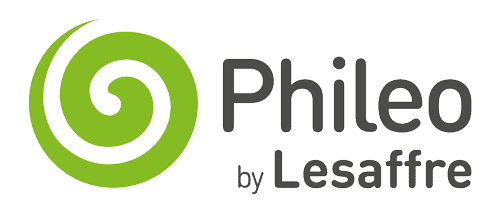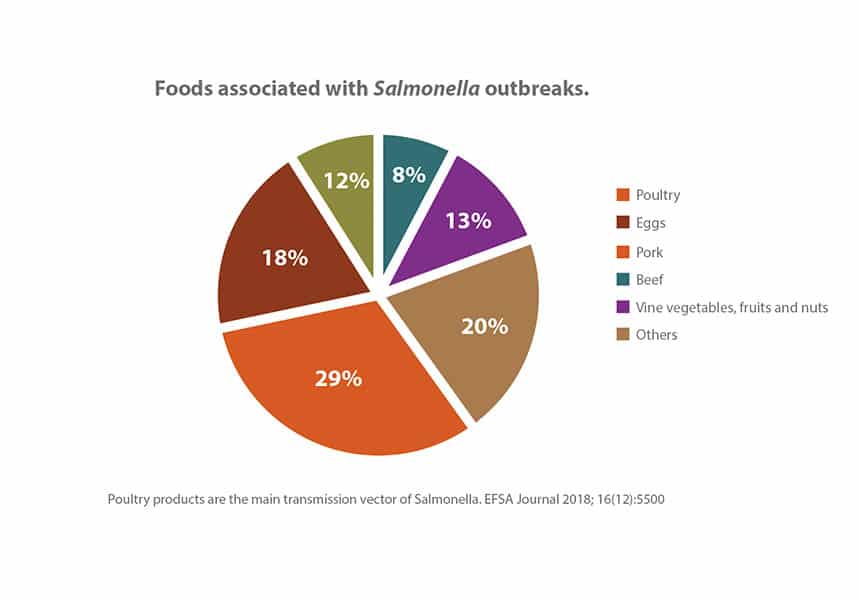Salmonella control in layers to improve food safety
Salmonella is responsible for approximately 1 million foodborne illnesses a year in the US and 91,000 in Europe. Salmonella contamination is a global issue in poultry production. Interventions are applied in processing plants to reduce the contamination of poultry products, although the real solution is to prevent the arrival of contaminated broilers, turkeys or eggs in processing plants in the first place. Prevention at farm level is very important in reducing the risk of poultry meat or table egg contamination. Eggs are responsible for 18% of Salmonella outbreaks in food.

Salmonella contamination in poultry farms
Salmonella can come from feed: through additives and thermisation
Salmonella can linger in poultry houses, which remain contaminated from a previous batch of birds and are poorly disinfected, or contaminated because of rodents, insects etc.
Salmonella can arrive with contaminated day-old chicks, after vertical transmission in the egg or by the contamination of the egg shell when passing through the cloaca.
Reducing Salmonella pressure in the gut
As Safmannan® contains high concentrations of mannans and beta-glucans, diet supplementation with the product enables the adherence of Salmonella to mannans of Safmannan®, thus reducing gut Salmonella pressures during faeces excretion.
Beta-glucans and mannans modulate the immune function, with higher antibody levels released at the surface of the gut epithelium: more secretory IgA targeting Salmonella.
Safmannan® helps preserve tight junctions for less Salmonella translocation from gut content to deep organs, such as the liver, spleen, or even the ovary grape (relevant for layers and breeders).
End of rearing
At 17 weeks old, 24 birds were orally challenged with 7×107 CFU of Salmonella Enteritidis. Half the birds were fed a supplemented diet with Safmannan® at 500 g/ton. At 18 weeks, ceca were collected and analysed for Salmonella prevalence. A reduction of 41 points of prevalence was found in the supplemented birds, showing the beneficial effect of Safmannan® for controlling Salmonella contamination.
Beginning of egg production
At 22 weeks old, 24 birds were orally challenged with 8.7×109 CFU of Salmonella Typhimurium. Half the birds were fed a supplemented diet with Safmannan® at 500 g/ton. At 23 weeks, ceca were collected and analysed for Salmonella. A reduction of more than 1 log was found in the supplemented birds. This means there was at least 10 times more Salmonellain the cecum of supplemented layers than in control birds.
During second half of egg production
At 56 weeks old, 45 birds were orally challenged with 7×107 CFU of Salmonella Enteritidis. 15 birds were not supplemented, 15 were supplemented with Safmannan® at 500 g/ton of feed, 15 were supplemented with Microsaf®, a probiotic associating 3 Bacillus species, at 500 g/ton. At 61 weeks, ceca were collected and analysed for Salmonella. Reductions between the control and Microsaf®, and the control and Safmannan® were significant (p<0.05). This confirms the capacity of both Safmannan® and Microsaf® to help control Salmonella on layer farms.
Strategies to reduce Salmonella prevalence in the poultry industry


















